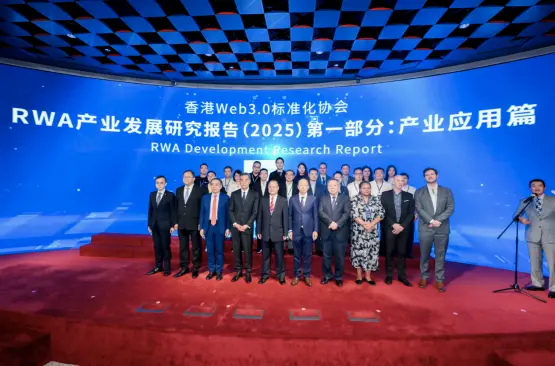Author: Friends of Planet Lord, Odaily
With the rapid development of the tokenization trend of Real-World Assets (RWA), the market has been rife with the rhetoric that "everything can be RWA." However, the "RWA Industry Development Research Report · Industry Chapter 2025" (hereinafter referred to as the "Report") was released in Hong Kong on August 7, breaking this blind optimism and systematically proposing standards and frameworks for asset selection.

The report points out that not all assets are suitable for the three major thresholds of value stability, clear legal rights, and off-chain data verifiability. RWA tokenization, the notion that "everything can be RWA," is a fallacy. Successfully scaling assets need to meet these criteria.
Currently, the RWA industry is at a critical juncture, transitioning from concept validation to practical application. According to Defillama data, as of June 2025, the total locked value (TVL) of RWA reached $12.5 billion, a 124% increase from 2024. RWA tokenization has become a key focus for global finance and blockchain industries, forming a collaborative landscape involving traditional institutions, financial entities, tech companies, and crypto projects.
Various entities are accelerating the transition of RWA from concept validation to large-scale application through cross-industry collaboration, compliance pilots, and underlying technological innovations. For example, leading global banks like Citibank and Standard Chartered are exploring RWA applications in payment settlements, asset management, and cross-border transactions; Ant Group has launched a blockchain platform called Jovay, designed specifically for institutional-level RWA trading, significantly enhancing throughput and reducing user response time.
As different asset types gradually achieve on-chain tokenization, new energy assets, with their rigid demand and trustworthy digital characteristics, have become ideal anchor assets for RWA. Meanwhile, although the application scenarios for real estate RWA continue to expand, several representative typical directions have already emerged in practice. These include five mainstream asset categories: financial assets such as gold, bonds, accounts receivable, and funds; new energy assets like charging stations and photovoltaics; real estate assets such as hotels and properties; intangible assets like carbon credits, data, and intellectual property; and computing power assets like GPU hardware. RWA represents "Chinese characteristics," showcasing the immense potential of green finance and financing scenarios for the real economy. The AI industry, including computing power assets like GPUs, is also exploring RWA in fields such as commercial real estate, but faces challenges like differences in property registration, inconsistent valuations, and local regulatory compliance.
The report also notes that the deep integration of RWA and stablecoins marks a paradigm shift in "on-chain finance," addressing issues of "transaction idling" and "token rootlessness" in the crypto ecosystem, and facilitating a transition from mere "cryptocurrency speculation" to an "on-chain value internet."
In the face of new opportunities brought by RWA, regulatory frameworks are gradually forming principles of penetrating regulation and sandbox testing mechanisms, aimed at providing clear compliance pathways for industry innovation. Regulatory agencies in various countries generally adopt penetrating regulatory principles and establish market barriers through licensing systems, while also creating regulatory sandbox mechanisms to provide a controllable testing environment for innovative applications.
The report emphasizes that the rise of RWA is not coincidental but the result of multiple factors, including the lack of liquidity in traditional assets, the maturity of blockchain technology, and changes in market demand. However, the development of RWA still faces significant risks, such as notable regulatory differences across countries, insufficient transparency of off-chain data, and poor liquidity of certain assets. Additionally, technical security vulnerabilities and contract complexity pose potential hazards. Therefore, while pursuing technological innovation, it is essential to emphasize the importance of risk management and compliance construction.
It is understood that the "RWA Industry Development Research Report · Industry Chapter 2025" was initiated by the Hong Kong Web 3.0 Standardization Association, Hong Kong Polytechnic University, the Digital Economy Research Center of the Guangdong-Hong Kong-Macao Greater Bay Area International Information Technology Association, and the IEEE Computer Society Blockchain and Distributed Ledger Standardization Committee.
Click to learn about job openings at ChainCatcher
Recommended Reading:
From Advertiser to Crypto "Price Hunter," Peter Brandt's half-century trading legend
免责声明:本文章仅代表作者个人观点,不代表本平台的立场和观点。本文章仅供信息分享,不构成对任何人的任何投资建议。用户与作者之间的任何争议,与本平台无关。如网页中刊载的文章或图片涉及侵权,请提供相关的权利证明和身份证明发送邮件到support@aicoin.com,本平台相关工作人员将会进行核查。




